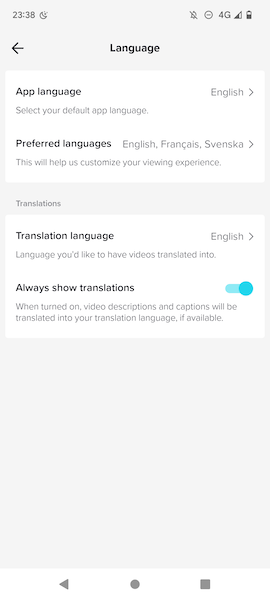Welcome to another week of Dear Duolingo, an advice column just for language learners. Catch up on past installments here.
Hey, learners! This week we have a special installment of Dear Duolingo… written by you! That's right: Last fall, Dr. Lisa Frumkes shared tips for practicing languages when no one around you speaks them, and she invited you to submit your own tips.
And you did!! You sent amazing, clever ideas for language practice (and you Hawaiian learners really showed up!). This week, we're sharing some of our favorite tips and the learning science behind why they work.
Learner tips for reading practice
Find a book written in both languages
From Vicenta: "A big help for me was finding a book that was written in both English and Swahili. It was a quick way to read and understand new words as I shifted to English when I met a new Swahili word."
Read children's books in the language
From Burkley: "I also like reading children's books in my new language. They usually have a pretty limited vocabulary, lots of pictures to help you figure out new words, and sometimes familiar story lines."
Reading practice is a fantastic way to practice your new language at your own pace, and Vicenta and Burkley offer great ideas to make reading in the language more approachable. Sometimes children's books can have uncommon vocabulary (think of words in fairy tales, like "goose," "wizard," "mermaid," and "ogre"!), but they also often have images to help you figure out new words and what's happening in the story. You might also look for books that you already know well in your own language!
Learner tips for writing practice
Try your own translations
From an anonymous learner: "Read and translate a book in the language you're learning. That's how I started learning French, and it was suggested by my best friend's mother who was Scottish and a professor of English at the University in Brno, Czech Republic."
Exchange messages with a fellow learner
From Sybrina: "I discovered a Twitter friend was also studying Italian using Duolingo. We decided to exchange daily DMs in Italian. Our mini conversations really empowered me to start up real life conversations with locals when visiting Italy this past spring."
Both of these tips encourage learners to put to use what you know. That can be better than relying heavily on a dictionary to look up every single word because it forces you to strengthen the connections you've already started building. You might need to be a little creative (maybe instead of "strawberry," you have to say "my favorite red fruit"), but that's part of the fun.
And Sybrina's tip reminds me of my own experience using basic Italian on my trip to Italy!
Learner tips for listening practice
Use subtitles to build your vocabulary
From Markella: "My English and Spanish are getting better by watching YouTube and movies with English subtitles. I write down all the new words and then look for them in my dictionaries. I watch interviews and motivational videos trying to see if my ear can catch any new and unknown words, and then I try to find how to spell the word and I search for it in my dictionary."
Get motivated by on-camera drama
From Becky: "Get very involved in a super juicy soap opera in the language you're learning. You can't imagine how good this works because you become so desperate to know what's going on in your soap so you don't let the passing of a foreign word get past you."
Movies, TV, and especially telenovelas (soap operas) are great ways to get listening practice, and subtitles can help you understand more of what you're hearing. But if you're ready for a challenge (and the added drama 🍿), you can also rely on the actors and soundtrack to help you piece together the action!
Learning tips for using technology
Use your phone's wallpaper to practice important words
From Kanua and family: "We sometimes create pictures with word groups in our PicsArt app and use them as our phone's wallpaper, so we see the words whenever we pick up the phone. That's also good for building networks of related words."
Use ChatGPT for reading practice
From Lou: "I'm using ChatGPT to write stories in Spanish for extra reading practice. I've been prompting it with children's stories about construction. The language is perfect for my level and the subject allows me to pick up extra vocabulary on the topic I am specifically learning Spanish for. Of course, it doesn't come close to Duolingo stories, but it's great for learning in between."
Train TikTok to help you learn
From Christopher: "On TikTok, you can change the app settings to include several languages, and then it'll show you TikToks in those languages. It also has an auto caption function so you can listen to the audio in the learning language and have captions in another language for some videos! Plus, with TikTok's educational content creators I often find myself learning about the actual culture of the country at the same time!"

These were all such clever uses of technology! What I especially love is that these tips help you incorporate language practice into your regular habits—even including picking up your phone. 💡 For intermediate and advanced learners, you can go a step further and change your phone's language!
Take your learning into your own hands!
For language learning, it's so important to build up study habits that work for your schedule, interests, and goals—which is why it was amazing to see the diversity of tips that y'all sent us! Look to your fellow learners for inspiration and new ways to practice, and look to Dear Duolingo for more answers to your learning questions!
Thanks to everyone who submitted their favorite study ideas! In order to fit our format and audience, some of the tips in this post have been slightly edited from the original submissions.
To get in touch with your own language and learning questions, email us at dearduolingo@duolingo.com.



